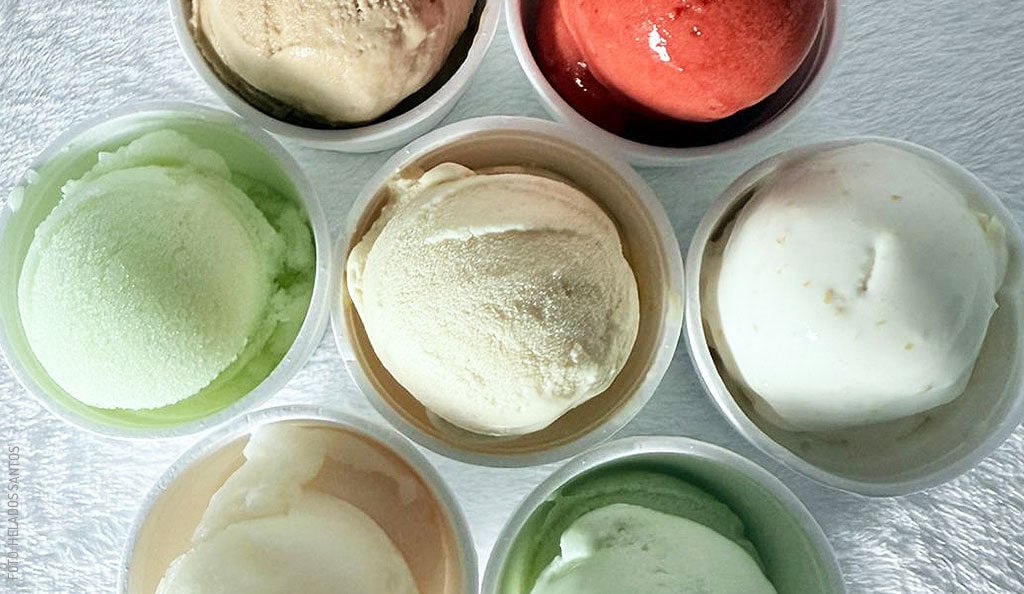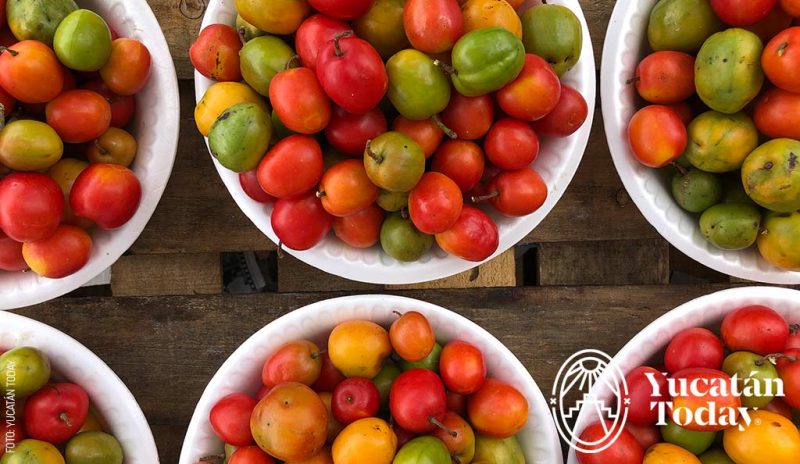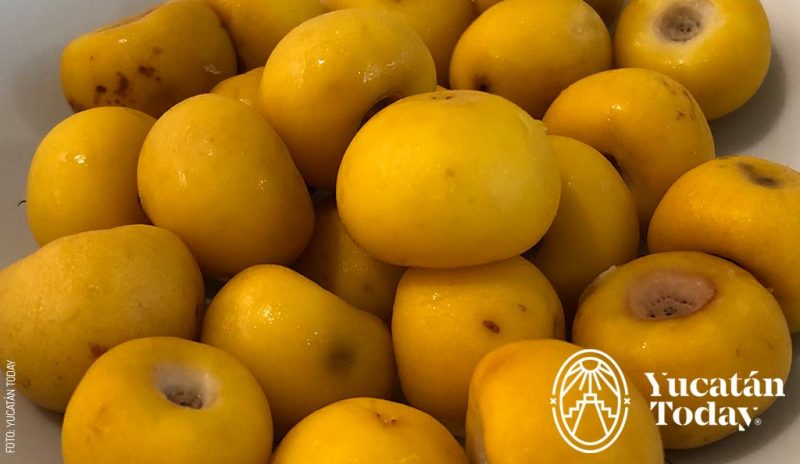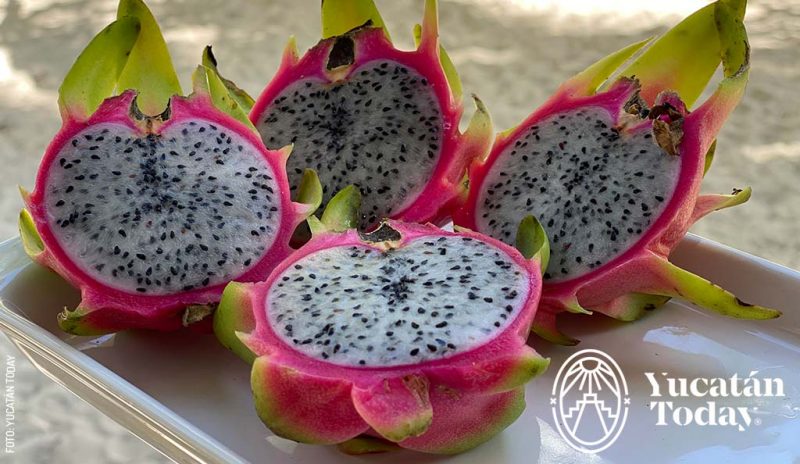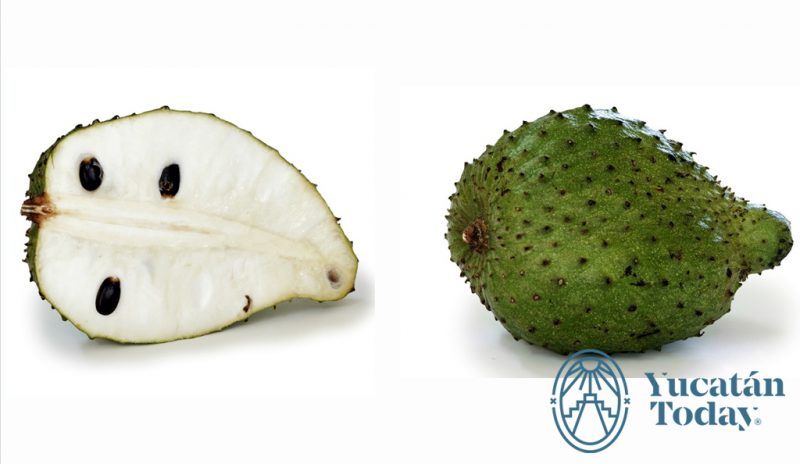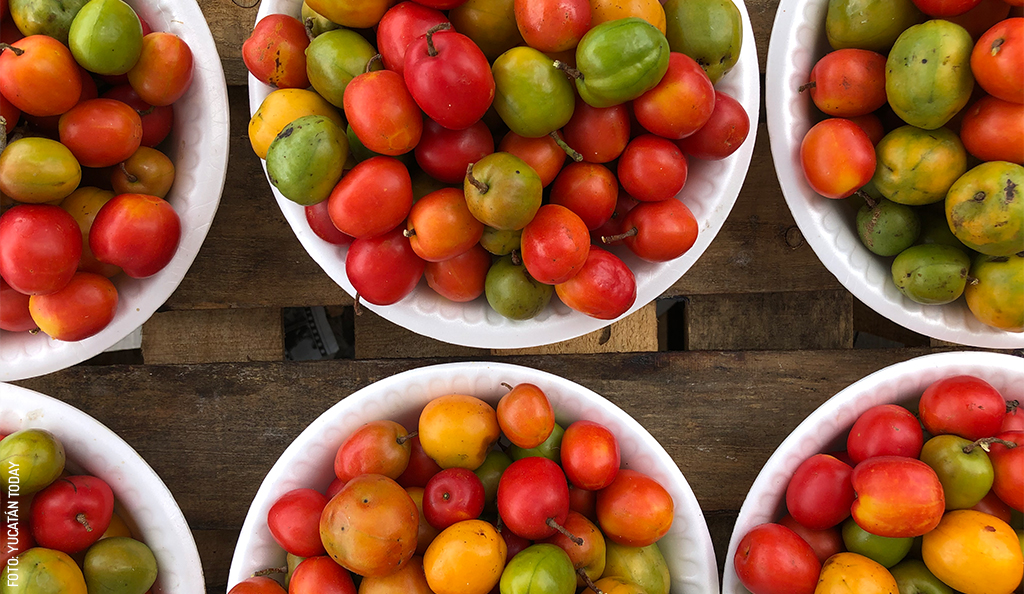
Tropical Flavors of Yucatán
Tropical Flavors of Yucatán
Yucatán gets colorful with a great variety of fruits that are grown from the beginning of May to the end of August (just when we’re craving something cool and fresh to help us endure the hottest months of the year!).
Personally, I love to see how the markets, Fruterias, and supermarkets fill up with ripe fruit that look like a rainbow of tropical flavors: from the orange Mamey and the yellow Nance, to the purple Caimito. They turn out to be more than just a little easy on the eyes (and perfect for pictures), they’re also delicious!
Now let’s talk about how you can treat yourself to this season’s local produce. You can enjoy most fruits by eating them “as is,” in juices, made into smoothies with milk or water, “A La Mexicana” with chili powder and a generous squeeze of lime juice, transformed into sweet ice creams and desserts, or by conserving them in syrup to eat year-round.
Let me tell you all about this tropical rainbow:
Red, Green, or Yellow…Simply delicious
The Yucatecan version of the plum, Ciruela, can be eaten at different stages. When it’s still green it is eaten by itself or with a bit of chili powder, this is how we like it best in the Península. If it’s yellow it is known as Chi’abal and its flavor becomes a bit sweeter. When it becomes red it’s fully ripe and is known as Chak abal. It can also be conserved in syrup and enjoyed once the season is over. The seed is quite big so be careful when you bite in!
Sweet and Orange
The Mamey is a sweet fruit with an intense orange color on the inside and a rough brown skin. The inside of the fruit is of such a distinctive and vibrant color that, in Yucatán, that shade is known simply as “Mamey.” They always remind me of my grandmother; every season she waited to prepare Mamey and milk smoothies, popsicles that she made herself, or would simply spend afternoons eating a Mamey by the spoonful. Doesn’t that sound good?
Yellow Versatility
In syrup, by itself, made into popsicles, served on shaved ice, or even macerated in liqueur… the versatility of the Nance makes it the star of Yucatecan fruits (it even has its own traditional flavor of ice cream!). Whether you try it on its own, or prepared as a sweet with Xtabentún liqueur, you’ll love it. The best part is that you can conserve Nances in syrup and eat them year-round.
The Tiny, Yellow Yucatecan Apple
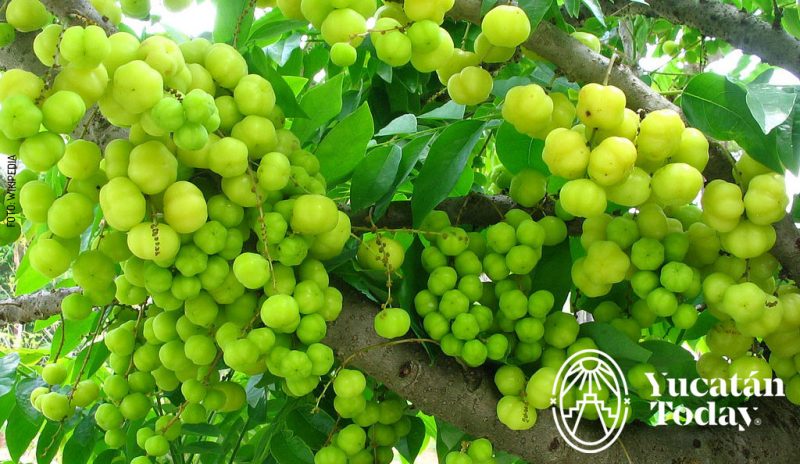 The Grosella used to be eaten a lot in Yucatán; however, its consumption has diminished a bit. It’s a fruit that you either love or you don’t like at all - there is no in-between. It’s yellow-green on the outside, with a texture similar to that of an apple, only it’s much smaller. When mixed with salt and chili, its acidic flavor makes you close your eyes and pucker your mouth. They are also often cooked with sugar, and are used as jellies or preserves.
The Grosella used to be eaten a lot in Yucatán; however, its consumption has diminished a bit. It’s a fruit that you either love or you don’t like at all - there is no in-between. It’s yellow-green on the outside, with a texture similar to that of an apple, only it’s much smaller. When mixed with salt and chili, its acidic flavor makes you close your eyes and pucker your mouth. They are also often cooked with sugar, and are used as jellies or preserves.
Vitamin C Like You Never Imagined
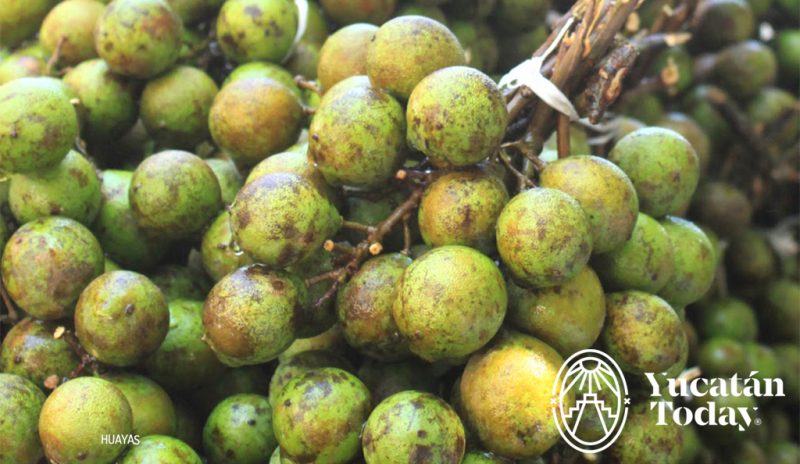 The Huaya, which is sold in bunches, is the favorite of many Yucatecans and it’s absolutely one of mine. Its sweet and sour taste mixes perfectly with chili and lime. Prepared like this, it becomes a visual poem. Removing the green shell and enjoying the fruit’s soft pulp and unusual flavor is a delicacy that locals await every year. Be careful when eating it, since the large seed can be dangerous if swallowed.
The Huaya, which is sold in bunches, is the favorite of many Yucatecans and it’s absolutely one of mine. Its sweet and sour taste mixes perfectly with chili and lime. Prepared like this, it becomes a visual poem. Removing the green shell and enjoying the fruit’s soft pulp and unusual flavor is a delicacy that locals await every year. Be careful when eating it, since the large seed can be dangerous if swallowed.
Creamy and Unique
The Anona looks very similar to the Guanábana because of its green exterior, but it does not have thorns. Inside, its creamy and sweet flavor turns it into a favorite to make Aguas Frescas and desserts. Have you ever tried it?
Intensity in Purple
Exotic and with an intense flavor, the Caimito is known for its purple outside and soft, white inside. It has a high content of fiber and vitamins and it is rounded like a sphere. When you try it, be careful with the resin it produces, it can stain your mouth and leave it feeling a little sticky - but nothing that can’t be fixed with a bit of water.
![]() The Yucatecan Dragon Fruit
The Yucatecan Dragon Fruit
The Yucatecan version of dragon fruit, known locally as Pitahaya, is pink on the outside, white on the inside, and has small seeds you can eat. Its slightly acidic flavor makes it ideal for Aguas Frescas, popsicles, ice cream, and even to include in salads. For me, it’s one of the most exotic and visually pleasing fruits out there.
![]() Delicacy in White
Delicacy in White
You don’t want to miss the Guanábana. Though its scaly, green exterior may not seem appealing, its sweet and soft pulp makes it perfect for blending it with water and ice for a refreshing and natural smoothie. You can only eat it while it’s in season, so if you see it, don’t miss the chance to buy one and try it for yourself.
Black and Healthy
The Zapote Negro or Tauch is a green fruit with a thin outer skin, a black inside, and a slightly pasty texture. It’s perfect to make ice cream, smoothies, or desserts. It’s also very good for you since it has a high vitamin C content. You can split it in half and eat it with a spoon directly, or bake it into sweets. When I was growing up, we used to mix it with orange juice for a special seasonal smoothie.
Ciricote, a Traditional Dessert
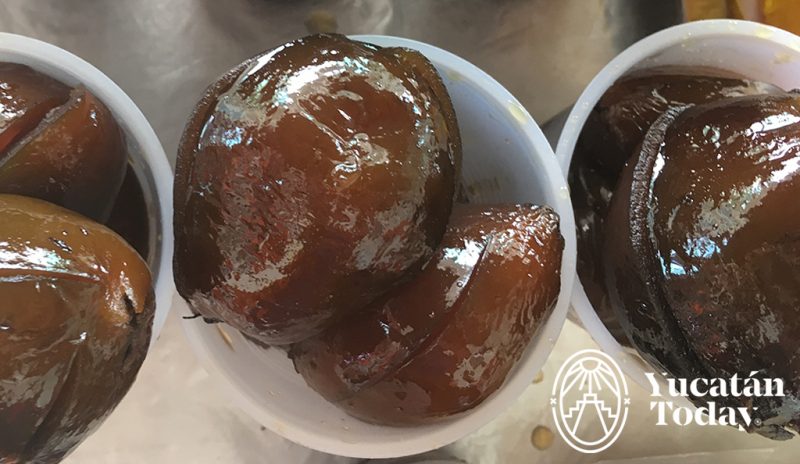 The Ciricote is very popular in the state of Yucatán when preserved in syrup. Let’s just say it’s the quintessential partner to regional cuisine classics. Boiling it with sugar and serving it as a candy is a tradition that goes back to the Maya civilization.
The Ciricote is very popular in the state of Yucatán when preserved in syrup. Let’s just say it’s the quintessential partner to regional cuisine classics. Boiling it with sugar and serving it as a candy is a tradition that goes back to the Maya civilization.

Author: Violeta H. Cantarell
“Meridana,” traveler, animal lover, passionate reader, commentator, and enthusiastic promoter of the natural and human beauty of Yucatán.
Receive the latest articles and much more from the best of Yucatán in your email!
Related articles
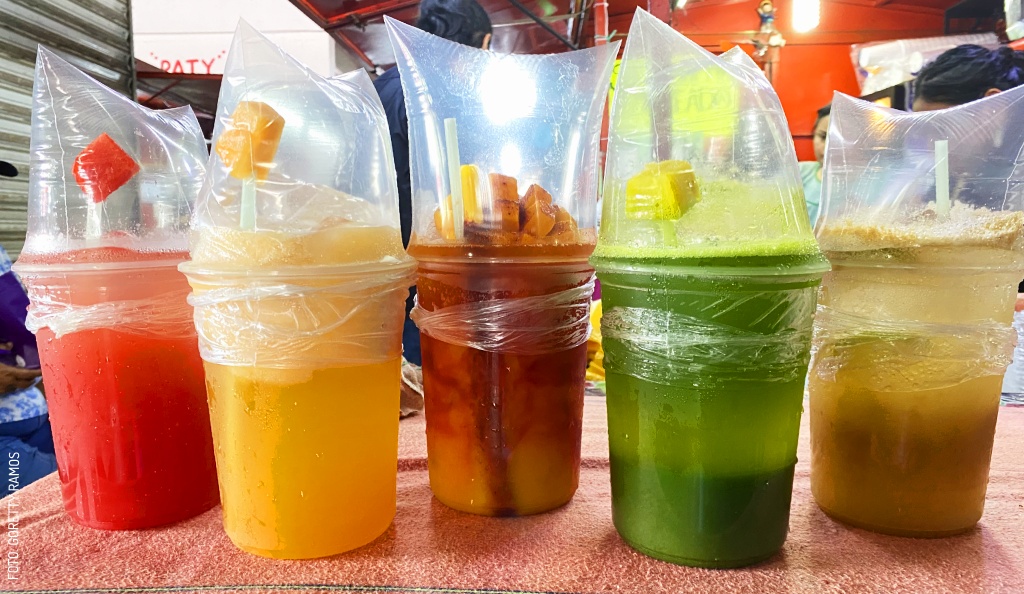
Refreshing drinks in the markets of Mérida
Discover the refreshing drinks in Mérida markets to beat the Yucatán heat. From traditional sodas to fresh fruit juices, enjoy these local favorites.
The Sweetest Event: Orange Fair in Oxkutzcab
Taste the Feria de la Naranja in Oxkutzcab, featuring intricate fruit displays, local produce, cultural events, and family-friendly activities.